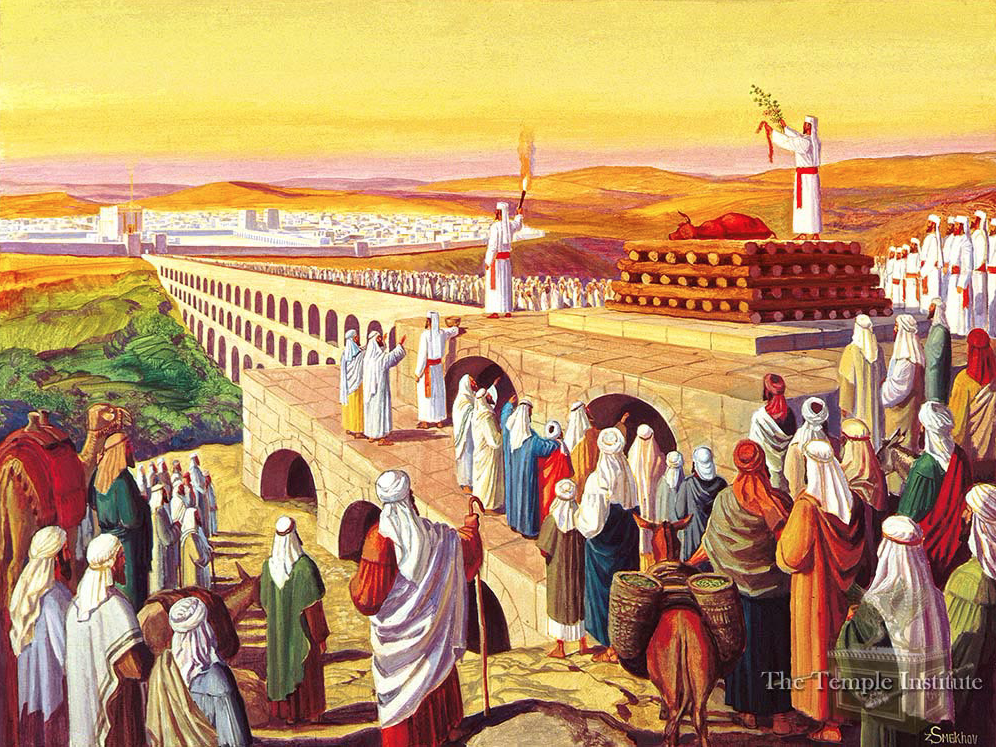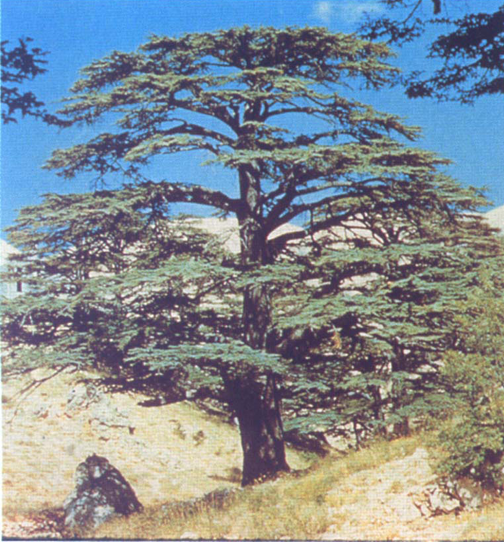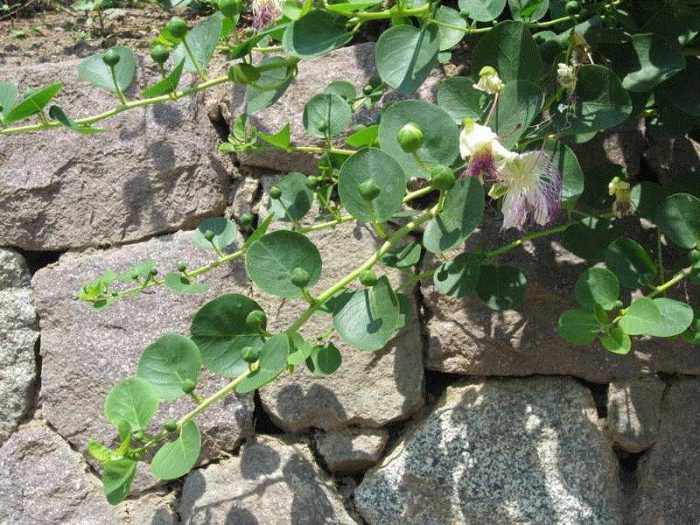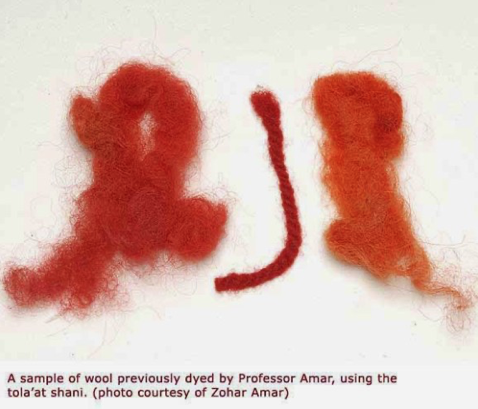
The Fire Sacrifices and Offerings of Israel – The Red Heifer Sacrifice
The red heifer ceremony produced ash for the water to remove ritual impurities contracted through contact with a corpse, bones, or a grave.
The Red Heifer
The red heifer ceremony’s function was to produce ash for the water used to remove ritual impurity contracted through contact with a corpse, bones, or a grave (Numbers 19:1-22). It is another purification offering for sin:
“ ‘Then a man who is ceremonially clean must gather up the ashes of the red heifer and put them in a ceremonially clean place outside the camp. They must be kept for the community of the Israelites for use in the water of purification—it is a purification for sin. (Numbers 19:9 NET)
“ ‘This is the law: When a man dies in a tent, anyone who comes into the tent and all who are in the tent will be ceremonially unclean seven days. And every open container that has no covering fastened on it is unclean. And whoever touches the body of someone killed with a sword in the open fields, or the body of someone who died of natural causes, or a human bone, or a grave, will be unclean seven days. “ (Numbers 19:14–16 NET)
“ ‘Whoever touches the corpse of any person will be ceremonially unclean seven days. (Numbers 19:11 NET)
The Red Heifer to be sacrificed had to meet the following four criteria:
- Color – Red hair (reddish-brown).
- Condition – Perfect without blemish or defect, and never yoked (cf. Malachi 1:8),
- Gender – Female (4),
- Age – Young (Hebrews 9:13 NET), generally, the animal had to be one year old [i.e., at the peak of life and health]. Sometimes, it could be as young as eight days old (Leviticus 22:27) or as old as three years (Genesis 15:9). (2)
There are ten sequential steps of the Red Heifer Sacrifice ritual:
- The Israelites brought a red heifer to a priest (not the high priest) (Numbers 19:2),
- The priest would take the red heifer outside the camp (Numbers 19:3),
- The red heifer would be slaughtered before the priest (Numbers 19:3),
- The priest would use his finger to sprinkle the blood seven times directly in front of the tent of the meeting (Numbers 19:4),
- The red heifer would then be burned to ashes before the priest outside the camp burning the skin, flesh, blood, and offal (dung) (Numbers 19:5). (This would NOT provide a sweet-smelling aroma to God),
- The priest would throw cedarwood, hyssop, and scarlet wool into the fire while the red heifer was burning (Numbers 19:6),
- The priest must wash his clothes in water and bathe himself in water and may return to camp but will be ceremonially unclean until evening (Numbers 19:7),
- The one who burns the red heifer must wash his clothes in water and bathe himself in water but will be ceremonially unclean until evening (Numbers 19:8),
- A ceremonially clean man must gather up the ashes of the red heifer and place them in a ceremonially clean place outside the camp. The ashes of the red heifer must be stored for the community of Israelites and resident foreigners to use in the “water of purification” for the removal of corpse contamination sin (Numbers 19:9-22. Numbers 31:19-24) and
- The man who gathered the ashes of the red heifer must wash his clothes and be ceremonially unclean until evening (Numbers 19:10).
The corpse-decontamination ritual performed by a priest involved the ashes of a red heifer (or cow) mixed with spring (i.e., flowing or “living”) water and sprinkled upon persons or objects to be purified as described in Numbers 19:1–22 and applied in Numbers 31:19–24 in the case of soldiers and captives returning from war. (6)
Israelites, not Men of War (Numbers 19:17-19), Men of War (Numbers 31:19-24), Nazirites (Numbers 6:9-12), and priests (Ezekiel 44:26,27) required separate purification offerings for corpse contamination (6) Priests were defiled if they came near a dead person but were only allowed to be defiled for the death of their father, mother, son, daughter, brother, or sister (Ezekial 44:25). The High Priest could not go near any dead person, including his father and mother (Leviticus 21:11); therefore, he should not be defiled. Hence, no guidance is given for the defilement of a High Priest (1).
If a corpse-contaminated person did not partake of the prescribed purification using the water of purification, then that person remained ceremonially unclean and cut off from the community because they had polluted the sanctuary of the Lord (Numbers 19:20).
There are five sequential steps for the cleansing of corpse uncleanliness for individuals that were NOT Men of War, Nazirites, or priests:
- A vessel was filled with fresh running water with ashes from the Red Heifer, burnt for the purification of sin, mixed with this water, and then poured over the unclean person (Leviticus 19:17),
- A ceremonially clean person took hyssop, dipped it in the water, and sprinkled it on the tent, on all its furnishings, and on the people who were there, or on anyone who touched a bone, or one killed, or one who died, or a grave (Leviticus 19:18),
- On the third day (1), a ceremonially clean person sprinkled the unclean person. The person who sprinkled the water of purification had to wash their clothes, and the person who touched the water of purification was unclean until evening. Whatever the unclean person touches becomes unclean, and the person who touches it will be unclean until evening (Leviticus 19:19),
- On the seventh day (1), a ceremonially clean person sprinkled the unclean person, thus purifying them. The person who sprinkled the water of purification had to wash their clothes, and the one who touched the water of purification was unclean until evening. Whatever the unclean person touched was unclean, and the person who touches it will be unclean until evening (Leviticus 19:19), and
- the purified person had to wash their clothes, bathe in water, and be ceremonially clean in the evening (Leviticus 19:19).
There are six sequential steps for the cleansing of Men of War
- Those who killed anyone or touched any of the dead remained outside the camp for seven days (Numbers 31:19),
- They purified themselves and their captives on the third day, and on the seventh day (Numbers 31:19),
- They purified each garment and everything that is made of skin, everything made of goat’s hair, and everything made of wood (Numbers 31:20),
- Everything that could withstand fire was passed through fire (e.g., Gold, silver, bronze, iron, tin, and lead) to become ceremonially clean; also, it was purified with the water of purification (Numbers 31:22,23).
- Anything that could not withstand fire was passed through the water of purification only (Numbers 31:23),
- Their clothes were washed on the seventh day, and then they were ceremonially clean and could re-enter the camp.’ ” (Numbers 31:24)
There are ten sequential steps for the cleansing of unintentional defilement of a Nazirite’s consecrated head caused by inadvertently coming near a corpse:
- Steps 1-5; perform the five steps for the cleansing of corpse uncleanliness for those that are not priests (Numbers 6:9),
- Step 6; he must shave his head on the seventh day of his purification (Numbers 6:9),
- Step 7; he must bring two turtledoves or two young pigeons to the priest at the entrance to the tent of meeting on the eighth day (Numbers 6:10),
- Step 8; the priest will offer one for a purification offering and the other as a burnt offering and make atonement for him because of his transgression regarding the corpse (Numbers 6:11),
- Step 9; he must reconsecrate his head on that day (Numbers 6:11),
- Step 10; he must rededicate to the Lord the days of his separation and bring a male lamb in its first year as a trespass (reparation) offering. The former days will not be counted because his separation was defiled (Numbers 6:12 NET).
There are seven sequential steps for the cleansing of intentional defilement for priests caused by coming near an immediate family member’s corpse (i.e., father, mother, son, daughter, brother, or sister):
- Steps 1-5; perform the five steps for the cleansing of corpse uncleanliness for those that are not priests (Ezekiel 44:26),
- Step 6; after a priest has become ceremonially clean, they must count off a period of seven days (Ezekiel 44:26), and
- Step 7; on the day the priest re-enters the sanctuary into the inner court to serve in the sanctuary, he must offer a sin offering (Ezekiel 44:27 NET).
Typological Meaning of the Red Heifer Sacrifice
The Book of Hebrews uses the image of the red heifer ceremony to picture Christ’s cleansing believers of the effect of “dead works.” Dead works are the counterfeit of good works and refer to the futile attempt to do things in our ability to please God. Good works are those done with God’s grace (favor) and God’s ability (mercy) through faith based on the fact that God is fully pleased with us IN CHRIST (Ephesians 2:8,9. Colossians 2:6).
For if the blood of goats and bulls and the ashes of a young cow sprinkled on those who are defiled consecrated them and provided ritual purity, how much more will the blood of Christ, who through the eternal Spirit offered himself without blemish to God, purify our consciences from dead works to worship the living God.(Hebrews 9:13–14 NET)
Water
Water in the scriptures represents the Word of God and the Spirit of God. Living water is water that is flowing from a spring juxtaposed to stagnant water (e.g. water stored in a container or cistern). (John 4:10,13 John 7:38. Revelation 7:16,17)
“ ‘I will take you from the nations and gather you from all the countries; then I will bring you to your land. I will sprinkle you with pure water and you will be clean from all your impurities. I will purify you from all your idols. (Ezekiel 36:24–25 NET)
Husbands, love your wives just as Christ loved the church and gave himself for her to sanctify her by cleansing her with the washing of the water by the word, so that he may present the church to himself as glorious—not having a stain or wrinkle, or any such blemish, but holy and blameless. (Ephesians 5:25–27 NET)

Red Heifer
The female red heifer represents Jesus as an offering for all mankind to free us from slavery to the fear of death. (4)
Therefore, since the children share in flesh and blood, he likewise shared in their humanity, so that through death he could destroy the one who holds the power of death (that is, the devil), and set free those who were held in slavery all their lives by their fear of death. (Hebrews 2:14–15 NET)

King Solomon produced books describing the largest (cedar) to the smallest (hyssop) in the field of botany at that time.
He produced manuals on botany, describing every kind of plant, from the cedars of Lebanon to the hyssop that grows on walls. He also produced manuals on biology, describing animals, birds, insects, and fish. (1 Kings 4:33 NET)
Cedarwood
Cedar signified royal power and wealth (1 Kings 10:27). Thus the evergreen cedar symbolized growth and strength (Psalms 92:12; cf. Ezekiel 17). (7)

Hyssop
A plant used for ritual cleansing purposes, a humble plant springing out of the wall (1 Kings 4:33), in extreme contrast to the cedar. (8)

After a careful examination, Dr. Royle has come to the conclusion that the hyssop of the Bible is the caper-plant (Capparis spinosa of botanists); that the name of the plant in Arabic, azaf, corresponds with the Hebrew esobh; and that the shrub is fitted for all the purposes mentioned in the Scriptures. (12)
“The caper-bush belongs to the natural order Capparidaceæ or the Caper family. The plants of this order have pungent, stimulant, and antiscorbutic qualities. The caper-bush grows in Lower Egypt, in the deserts of Sinai, and in Palestine. The localities in which the plant delights are barren soils, rocky precipices, and the sides of walls. The caper plant grows on walls in many southern countries. I have gathered it on walls in Italy. Tristram saw it hanging from the walls of Jerusalem and steep rocks in the gorge of the Kidron. He also says that the variety called ægyptiaca has a trailing habit on the sandy plain between Jericho and Jordan, as well as at the southeast end of the Dead Sea and on the plains of Shittim.” (12)
אֵזוֹב (ʾēzôḇ, “hyssop”) occurs ten times in the OT. (“Hyssop appears twice in the New Covenant: in John 19:29, as the instrument for lifting the vinegar to Jesus’ lips when he was on the cross, and in Hebrews 9:19–20, where the people and the book are sprinkled with blood… Seven OT references are found in two rituals: cleansing a leper (Leviticus 14:4, 6, 49, 51, 52) and cleansing those defiled through contact with the dead (Num 19:6, 18). The other three references are the Passover (Exodus 12:22), King Solomon’s wisdom (1 Kings 4:33), and King David’s prayer for cleanings (Psalms 51:7). (11)
Scarlet (Red) Wool

“I am the good shepherd. I know my own and my own know me—just as the Father knows me and I know the Father—and I lay down my life for the sheep. I have other sheep that do not come from this sheepfold. I must bring them too, and they will listen to my voice, so that there will be one flock and one shepherd.(John 10:14–16 NET)
In Hebrew, the word for red is “Adam” or “Edom.” Adam is one of the words for “man” and literally means “red-blooded man.” It is derived from the root word in Hebrew for blood: “Dam.” The wool comes from sheep, and mankind is often likened to sheep in the Old and New Covenants.
Come, let’s consider your options,” says the Lord. “Though your sins have stained you like the color red, you can become white like snow; though they are as easy to see as the color scarlet, you can become white like wool. (Isaiah 1:18 NET)
Consequently, wool-dyed red topologically represents the sins of mankind.
Cedarwood, Hyssop, and Scarlet Wool Combined
Cedarwood, Hyssop, and Scarlet Wool taken together with the “Whole Burnt Offering” of a specific animal (1), that included its blood and dung, symbolically represent mankind’s works from the grandest (cedar) to the humblest (hyssop) are sinful (scarlet wool) and repulsive (dung) before God and must be covered by blood and then burned until nothing but ashes remain from the fire of His judgment!
We are all like one who is unclean, all our so-called righteous acts are like a menstrual rag in your sight. We all wither like a leaf; our sins carry us away like the wind. (Isaiah 64:6 NET)
A man must believe he is lost before he can be saved. One reason why many are not saved is because they do not believe they are lost. They fold their filthy rags of self-righteousness about them, instead of acknowledging that they are miserable sinners. D. L. Moody (9)
More than that, I now regard all things as liabilities compared to the far greater value of knowing Christ Jesus my Lord, for whom I have suffered the loss of all things—indeed, I regard them as dung!—that I may gain Christ, and be found in him, not because I have my own righteousness derived from the law, but because I have the righteousness that comes by way of Christ’s faithfulness—a righteousness from God that is in fact based on Christ’s faithfulness. My aim is to know him, to experience the power of his resurrection, to share in his sufferings, and to be like him in his death, and so, somehow, to attain to the resurrection from the dead. (Philippians 3:8–11 NET)
Sacrifices and Offerings of the Old Covenant Series:
- The Fire Sacrifices and Offerings of Israel – Introduction
- The Fire Sacrifices and Offerings of Israel – The “Whole” Burnt Offering
- The Fire Sacrifices and Offerings of Israel – The Meal Offering
- The Fire Sacrifices and Offerings of Israel – The Peace Offering
- The Fire Sacrifices and Offerings of Israel – The Sin Offering
- The Fire Sacrifices and Offerings of Israel – The Trespass Offering
- The Fire Sacrifices and Offerings of Israel – The Red Heifer Offering
- The Fire Sacrifices and Offerings of Israel – The Ordination Offering
Biblical Typologies, Metaphors, & Similes Series:
- The Old Leaven of the Kingdom of Darkness
- The New Leaven of the Kingdom of Heaven
- Wine
- Water
- Finely Sifted (Wheat) Flour
- Frankincense
- Myrrh
- Anointing Oil
- Olive Oil
- Honey
- Salt
- Waving and Heaving
- Barley
- Gold
- Silver
- Bronze
- Stone
- Wood
- Linen
- Iron
- Shofar and Trumpet
Shalom
(Security, Wholeness, Success)
Peace
Then he said to them, “Therefore every expert in the law who has been trained for the kingdom of heaven is like the owner of a house who brings out of his treasure what is new and old.” (Matthew 13:52 NET)
(1) Select the link to open another article with additional information in a new tab.
(2) This article has been primarily adapted from: Fruchtenbaum, A. G. (1983). The Messianic Bible Study Collection(Vol. 180, p. 16). Tustin, CA: Ariel Ministries.
(3) Featured Image from: https://templeinstitute.org/red-heifer-the-ceremony/
(4) A male animal represents this sacrifice for God’s benefit. Recall Adam, a male, was made for God’s benefit.
Eve, a female, was made for the man Adam’s benefit, and hence, when female animals are prescribed in other sacrifices, then it is for mankind’s benefit.
The Lord God said, “It is not good for the man to be alone. I will make a companion for him who corresponds to him.” (Genesis 2:18 NET)
“It follows that I show for what purpose God made man himself. As He contrived the world for the sake of man, so He formed man himself on His own account, as it were a priest of a divine temple, a spectator of His works and of heavenly objects. For he is the only being who, since he is intelligent and capable of reason, is able to understand God, to admire His works, and perceive His energy and power; for on this account he is furnished with judgment, intelligence, and prudence. On this account, he alone, beyond the other living creatures, has been made with an upright body and attitude so that he seems to have been raised up for the contemplation of his Parent. On this account, he alone has received language and a tongue the interpreter of his thought, that he may be able to declare the majesty of his Lord. Lastly, for this cause all things were placed under his control, that he himself might be under the control of God, their Maker and Creator. If God, therefore, designed man to be a worshipper of Himself, and on this account gave him so much honour, that he might rule over all things; it is plainly most just that he should worship Him who bestowed upon him such great gifts, and love man, who is united with us in the participation of the divine justice.”
Lactantius. (1886). A Treatise on the Anger of God. In A. Roberts, J. Donaldson, & A. C. Coxe (Eds.), W. Fletcher (Trans.), Fathers of the Third and Fourth Centuries: Lactantius, Venantius, Asterius, Victorinus, Dionysius, Apostolic Teaching and Constitutions, Homily, and Liturgies (Vol. 7, p. 271). Buffalo, NY: Christian Literature Company.
(5) Not Used
(6) Sprinkle, J. M. (2003). Red Heifer. In T. D. Alexander & D. W. Baker (Eds.), Dictionary of the Old Testament: Pentateuch (p. 669). Downers Grove, IL: InterVarsity Press.
(7) Brand, C., Draper, C., England, A., Bond, S., Clendenen, E. R., & Butler, T. C. (Eds.). (2003). Cedar. In Holman Illustrated Bible Dictionary (p. 274). Nashville, TN: Holman Bible Publishers.
(8) Masterman, E. W. G. (1915). Hyssop. In J. Orr, J. L. Nuelsen, E. Y. Mullins, & M. O. Evans (Eds.), The International Standard Bible Encyclopaedia (Vol. 1–5, p. 1445). Chicago: The Howard-Severance Company.
(9) Moody, D. L. (1875). Life Words from Gospel Addresses of D. L. Moody. (G. F. G. Royle, Ed.) (p. 6). London: John Snow & Co.
(10) Rathel, D. M. (2016). Goat. In J. D. Barry, D. Bomar, D. R. Brown, R. Klippenstein, D. Mangum, C. Sinclair Wolcott, … W. Widder (Eds.), The Lexham Bible Dictionary. Bellingham, WA: Lexham Press.
(11) Kaiser, W. C., Jr. (1990). Exodus. In F. E. Gaebelein (Ed.), The Expositor’s Bible Commentary: Genesis, Exodus, Leviticus, Numbers (Vol. 2, p. 376). Grand Rapids, MI: Zondervan Publishing House.
(12) Balfour, J. H. (1885). The Plants of the Bible (pp. 45–46). London; Edinburgh; New York: T. Nelson and Sons.


